|
Electronic Poster Session
MR Safety |
Tuesday, 19 June 2018
Electronic PosterMR Safety
4055 -4078 MR Safety of Implants
4175 -4198 Safety: Bioeffects, Magnetic Fields & Contrast Agents |
| |
MR Safety of Implants
Electronic Poster
MR Safety
Tuesday, 19 June 2018
| Exhibition Hall |
13:45 - 14:45 |
| |
|
Computer # |
|
4055.
 |
25 |
 Magnetic resonance imaging of patients with conventional and MR-conditional pacemakers: assessment of risk and incidence Magnetic resonance imaging of patients with conventional and MR-conditional pacemakers: assessment of risk and incidence
Markus Fahlström, Johan Olsrud, Tomas Bjerner, Elna-Marie Larsson, Carina Blomström-Lundqvist
Magnetic resonance imaging of patients with conventional- and MR-conditional pacemakers should be considered and may be considered respectively, based on a case-by-case risk-benefit assessment. However, information regarding incidence of risks with respect to exposure to different electromagnetic fields is limited. Based on a literary review, risk, complications and incidence was assessed. Most common risk/complication is reed switch activation. Electrode heating is a relevant risk, with minor clinical implication. Off-label MR-examinations of MR-conditional pacemakers or abandoned leads may be considered.
|
|
4056.
 |
26 |
 Safety of Active Catheters in MRI: Termination Impedance vs. RF-induced Heating Safety of Active Catheters in MRI: Termination Impedance vs. RF-induced Heating
Ali Özen, Thomas Lottner, Michael Bock
RF-induced heating of the active catheters was analyzed and analytically modeled to demonstrate that it can be controlled by adjusting the termination impedance. Current distribution of a single-loop active guiding catheter was formulated as a function of the incident electric field, propagation constants, and termination impedances. The tip SAR was displayed on a color-coded Smith chart in terms of the normalized input impedance. For the first time, analytical modeling and transfer function measurements were applied to active catheters. A novel signal level and impedance control unit was introduced, which is applicable also to other interventional devices.
|
|
4057.
 |
27 |
 Assessment of Iron Oxide Nanoparticle Concentration for Distinct Intercranial EEG Electrode Localization in MRI Assessment of Iron Oxide Nanoparticle Concentration for Distinct Intercranial EEG Electrode Localization in MRI
Johannes Erhardt, Jessica Martinez, Tyler Cork, Isabel Gessner, Sanjay Mathur, Thomas Stieglitz, Daniel Ennis
IcEEG electrodes for epilepsy and research applications impair fMRI and MR images with compromising susceptibility artifacts. Thin-film implants feature 100x less metal thickness and thus minimal artifacts. However, thin-film implants are inconspicuous in MRI. Therefore we present means of localization using super paramagnetic iron oxide nano particles to make thin-film implants ready for future applications. We present feasible concentrations and proof of concept.
|
|
4058.
 |
28 |
 Adaptive SAR mass-averaging to predict RF heating for B1 shimming in the presence of a hip implant for parallel transmit at 3T Adaptive SAR mass-averaging to predict RF heating for B1 shimming in the presence of a hip implant for parallel transmit at 3T
Aurelien Destruel, Kieran O'Brien, Markus Barth, Jin Jin, Feng Liu, Stuart Crozier
Parallel-transmit and B1-shimming techniques may significantly reduce radiofrequency (RF) artefacts when imaging near metal implants at 3T; however, it is known that around metal implants the 10g-averaged specific-absorption-rate (SAR10g) locations do not coincide with the location of maximum heating. In this work, we investigate the behaviour of the B1 field and RF heating around metal implants in a generic body coil at 3T as a function of shimming parameters using the adaptive SAR method we previously introduced as a fast estimate of temperature increase.
|
|
4059.
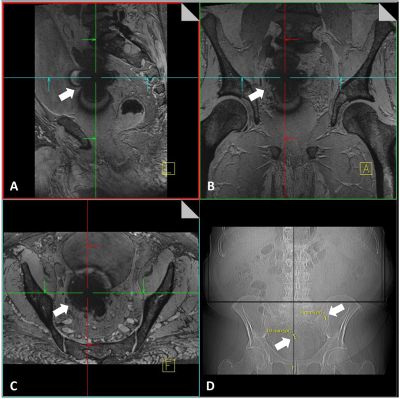 |
29 |
 Experience with 7 Tesla MRI of human subjects with passive implants and tattoos: an update Experience with 7 Tesla MRI of human subjects with passive implants and tattoos: an update
Oliver Kraff, Raphaela Berghs, Yacine Noureddine, Mark Ladd, Harald Quick
In this retrospective study, questionnaires and screening forms were analyzed to identify all subjects with implants and/or tattoos cleared for imaging at our passively shielded 7T whole-body MR system. Over the past 11 years, 496 out of 2370 healthy volunteers and volunteers with known pathologies had implants and/or tattoos and underwent a 7T MR examination. None of the subjects reported any discomfort related to heating or force during or after imaging. No findings regarding safety occurred and all examinations could be safely performed.
|
|
4060.
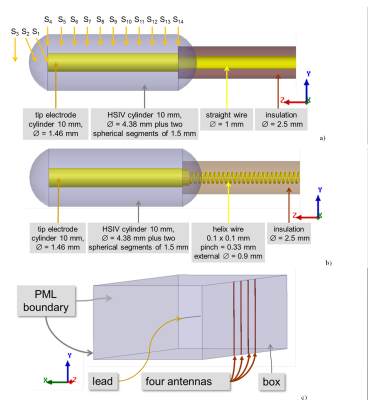 |
30 |
 Estimation of RF-induced temperature rise for helix and straight leads based on the lead electromagnetic model: a case study Estimation of RF-induced temperature rise for helix and straight leads based on the lead electromagnetic model: a case study
Mikhail Kozlov, Wolfgang Kainz
This case study investigated RF-induced heating of straight and helix leads at 127.7 MHz obtained with the lead electromagnetic model (LEM) and direct 3D electromagnetic and thermal co-simulations. A large set of incident electric fields was generated in a phantom by an array of four antennas with varying spatial positions and sources. LEM was a suitable approach for predicting temperature in close proximity to the end face of lead tip. However the variance of the fitted values and observed values was rather high for temperature at other locations around the lead tip.
|
|
4061.
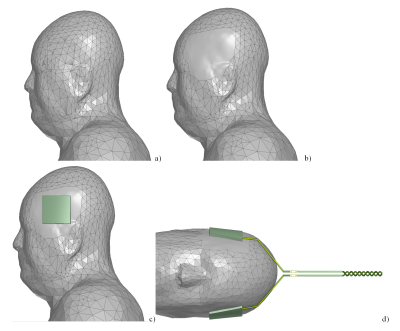 |
31 |
 RF Safety of Transcranial Direct Current Stimulation Equipment during MRI RF Safety of Transcranial Direct Current Stimulation Equipment during MRI
Mikhail Kozlov, Roland Müller , Andre Pampel, Benjamin Kalloch, Nikolaus Weiskopf, Harald Möller
We calculated the RF-induced power deposition at 3T due to the presence of tDCS equipment using an approximation of the human body by a single tissue numerical model. Influences of the tDCS lead including a built-in serial resistor on the power deposition were evaluated. Our case study provided strong evidence that the tDCS setup has a relevant impact on power deposition in proximity of the electrode edges at 3T. These particular conditions are not explicitly considered in the procedures that are used for SAR monitoring on the MRI scanner. The peak voltage across the serial resistor has to be carefully considered in terms of sufficient electrical strength to safely prevent sparks.
|
|
4062.
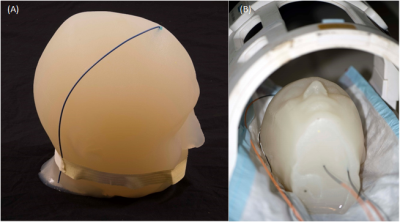 |
32 |
 Temperature measurements in a phantom during a 1.5T MRI in the presence of a µMS implant. Temperature measurements in a phantom during a 1.5T MRI in the presence of a µMS implant.
Giorgio Bonmassar, Kuldeepsinh Rana, Frederick Haer, Laleh Golestanirad
The technology consists of nanoscale structures for developing micro and nano-scale coils for microscopic magnetic stimulation of brain tissue. This technology will provide an important new tool for further exploration of micro-magnetic stimulation as a prospective tool for clinical and preclinical applications. In this abstract, we have shown that the technology is amenable of MRI imaging with low heating.
|
|
4063.
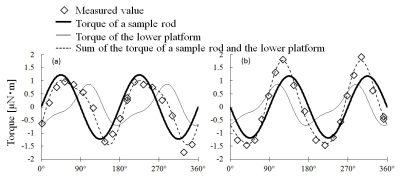 |
33 |
 Torque abnormality of Ti alloy in a static magnetic field Torque abnormality of Ti alloy in a static magnetic field
Minghui Tang, Shingo Kawahira, Naoyuki Nomura, Toru Yamamoto
Ti alloy has been introduced for medical implants to reduce MRI artifacts for its lower susceptibility than the preceding material of Elgiloy. The magnetic torque of metallic materials theoretically increases with an increase in the susceptibility. However, it was reported that the torque of cerebral aneurysm clips was comparable for both materials. In this study, we accurately measured the torque of Elgiloy and Ti alloy rods in an MR scanner and found that the small susceptibility anisotropy of Ti alloy rod causes a torque that is more than 100 times of the value expected from the conventional torque theory.
|
|
4064.
|
34 |
 A Prospective Study of the Safety of Tattoos in MRI A Prospective Study of the Safety of Tattoos in MRI
Martina Callaghan, Clive Negus, Megan Creasey, Shiela Burns, Janice Glensman, David Bradbury, Elaine Williams, Nikolaus Weiskopf
Tattoos are recognised as a potential source of increased risk for MRI. Here we present the results of a prospective study designed to assess the risk of a tattoo-related adverse event occurring during MRI scanning at 3T. The study spanned a 6 year period with 573 independent scanning sessions on 319 individuals. With the inclusion criteria adopted in this study, the probability of an adverse reaction was estimated to be < 1%.
|
|
4065.
 |
35 |
 Image-Based MR Safety Evaluation of Heating in Implanted Devices Image-Based MR Safety Evaluation of Heating in Implanted Devices
Samuel Guyer, Ken Sakaie, Se-Hong Oh, Stephen Jones
A thermal contrast agent with high sensitivity, thulium 1,4,7,10-tetramethyl-1,4,7,10-tetraazacyclododecane-1,4,7,10-tetraacetate (TmDOTMA-), was investigated for use in measuring the three-dimensional heating profile surrounding implantable devices with a goal of simplifying the safety assessment process. The technique was first demonstrated by imaging a vertical temperature gradient and was subsequently used to measure the heating profile surrounding a copper wire. We found gross agreement of this technique with concurrent fiber-optic temperature probe measurements, with the TmDOTMA- measurement complicated by a number of technical challenges and imaging artifacts.
|
|
4066.
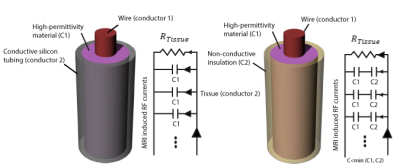 |
36 |
 Reducing heating of implanted leads through High-Dielectric Capacitive Bleeding of Current (HD-CBLOC): concepts, simulations and experimental results Reducing heating of implanted leads through High-Dielectric Capacitive Bleeding of Current (HD-CBLOC): concepts, simulations and experimental results
Laleh Golestani Rad, Lawrence Wald, Boris Keil, Giorgio Bonmassar
RF heating of conductive implants such as those in cardiac pacemakers and deep brain stimulation devices remains a major issue limiting access to MRI for hundreds of thousands of patients. Here we present a novel technique we call High-Dielectric Capacitive Bleeding of Current (HD-CBLOC) to develop an implanted lead with significantly reduced RF heating. The lead uses a high-permittivity insulating coating around the conductive wires to enable a distributed capacitive dissipation of RF currents along the length of the lead and thus reducing the energy deposition at the tip. Experiments show the configuration reduces heating by more than 15-fold during scans at 1.5 T. Simulations predict a similar effect at 3T and 7T.
|
|
4067.
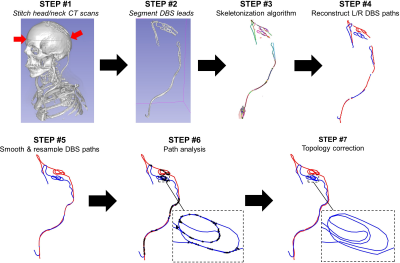 |
37 |
Generation of a “virtual population” of deep brain stimulation patient models for MRI safety studies
Did Not Present
Bastien Guerin, Mathias Davids, Darin Dougherty, Leonardo Angelone, Lawrence Wald
We develop and disseminate a “virtual population” of five deep brain stimulation (DBS) patient models. The models are high-quality, watertight, topologically correct, non-intersecting surface meshes that can be used in conjunction with Finite Element Method (FEM) tools such as Ansys HFSS and CST. They are realistic descriptions of actual DBS patients anatomy (internal air, bone and “average tissue”) as well as the entire DBS path including the Implantable Pulse Generator (IPG) and extension cables. We hope the models can be useful for assessment of inter-subject variability of RF-safety metrics such as SAR and temperature.
|
|
4068.
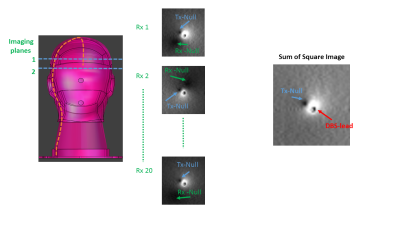 |
38 |
 Measuring Radio-Frequency Induced Currents On Metallic Leads Using Parallel Imaging Measuring Radio-Frequency Induced Currents On Metallic Leads Using Parallel Imaging
Yigitcan Eryaman, Sean Moen, Andrea Grant, Gregor Adriany, Kamil Ugurbil, Noam Harel, J. Thomas Vaughan
We present a method that can be used to calculate the RF induced currents flowing on metallic leads. Proposed method relies on analyzing MR magnitude images (acquired by parallel imaging) , and modeling/matching the null location at the vicinity of the lead. The calculated induced current can be used to predict safe excitation scenarios and reduce heating around the lead.
|
|
4069.
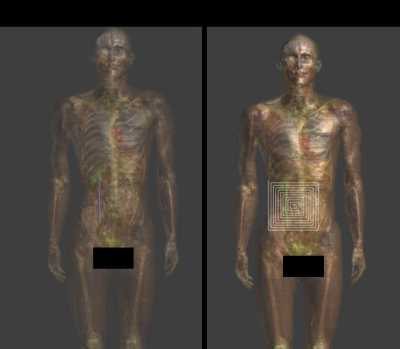 |
39 |
 MRI Implant Safety: Novel Mechanistic Model and Safety Assessment Approach for Small Implants and Abandoned Leads MRI Implant Safety: Novel Mechanistic Model and Safety Assessment Approach for Small Implants and Abandoned Leads
Ilaria Liorni, Esra Neufeld, Sven Kuehn, Manuel Murbach, Niels Kuster
Safety assessment of active implants is defined in the technical specification ISO/TS 10974. However, the safety of small passive implants must be assessed individually for each device, e.g., via the ASTM F2182-11a standard test method. Computational studies have demonstrated that the mechanism postulated for elongated implants at 64 MHz is not applicable. We propose a new mechanistic theory of general validity applicable across a large frequency range to describe exposure enhancement at critical lead locations. Simulation-based assessment was successfully compared to predictions from the mechanistic model on the impact of several parameters (tissue dielectric properties, insulation thickness, and tip shape).
|
|
4070.
 |
40 |
 Measuring dB/dt Induced Vibration in Medical Devices: Comparison of Discrete Frequencies Versus Use of a Variable-Frequency Chirp Pulse Measuring dB/dt Induced Vibration in Medical Devices: Comparison of Discrete Frequencies Versus Use of a Variable-Frequency Chirp Pulse
Christine Tarapacki, Daniel Martire, Colin McCurdy, William Handler, Blaine Chronik
Determining gradient field-induced vibration of a device typically involves multiple measurements at discrete frequencies. This study compares data from a frequency chirp to discrete frequencies in an effort to decrease testing time and obtain a larger range of information. Results confirm scaled displacement obtained through discrete frequency measurements and a frequency chirp matched for all measured frequencies.
|
|
4071.
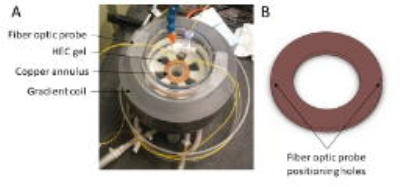 |
41 |
 Development of a standard reference object for monitoring quality and reproducibility in dB/dt-heating tests for medical devices Development of a standard reference object for monitoring quality and reproducibility in dB/dt-heating tests for medical devices
Christine Tarapacki, Jack Hendriks, Krzysztof Wawrzyn, William Handler, Blaine Chronik
The intent of this study is to introduce and characterize a standard reference object for gradient-induced dB/dt heating studies. Key attributes of a standard reference object would be simplicity, sensitivity (large response to exposure conditions), and reproducibility. Various geometries, materials, and exposure conditions were studied, and the results indicate the temperature rise of a simple copper annulus can be used to verify all components of a dB/dt exposure and measurement system are functioning prior to a device test. The thermal response of a 5-cm diameter copper annulus was characterized as a function of frequency and dB/dt-amplitude, both in air and in tissue-mimicking gel.
|
|
4072.
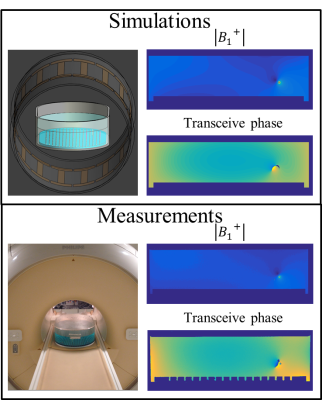 |
42 |
 MR based transfer matrix determination for a linear implant by joint estimation of the incident and scattered B$$$^+_1\hspace{2mm}$$$fields. MR based transfer matrix determination for a linear implant by joint estimation of the incident and scattered B$$$^+_1\hspace{2mm}$$$fields.
Janot Tokaya, Alexander Raaijmakers, Alessandro Sbrizzi, Peter Luijten, Cornelis Berg
Two findings that are steps towards fully MR-based TF determination in realistic situations are presented. Firstly, the transfer matrix, that is an extension of the transfer function (TF), can describe the RF response of an implant in a human model. Secondly, a joint minimization of the incident field and the scattered field, determined with the transfer matrix, can describe measured and simulated complex B$$$_1^+$$$ distributions in a phantom with a linear implant present. The TM and TF result from this minimization, which enables their determination from a single MRI acquisition with the implant in place.
|
|
4073.
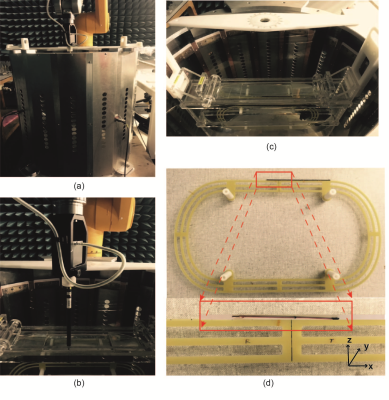 |
43 |
 A robust experimental evaluation method for RF safety assessment of implants during 1.5 T and 3.0 T MRI A robust experimental evaluation method for RF safety assessment of implants during 1.5 T and 3.0 T MRI
Aiping Yao, Earl Zastrow, Niels Kuster
The accuracy of the traditional SAR-based evaluation is normally limited by the extreme spatial gradient of the induced SAR within the high-heating region. In this work, we propose a reconstruction evaluation method that improves upon the traditional method by using simple numerical modeling and image processing algorithm. The total combined uncertainty caused by the high SAR gradient and limited probe resolution is reduced dramatically from 3dB to 1 dB with the proposed method. A generic implant with helical conductor and single electrode is successfully validated against numerical simulations with less than 0.5 dB deviation at both 1.5 T and 3.0 T MRI RF frequencies.
|
|
4074.
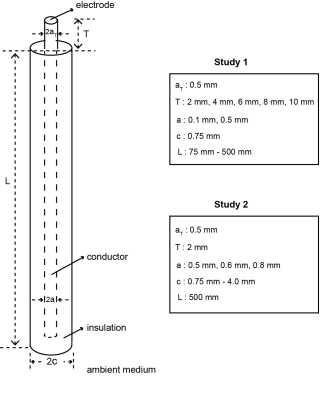 |
44 |
 Power to temperature conversion of AIMD under RF exposure Power to temperature conversion of AIMD under RF exposure
Aiping Yao, Earl Zastrow, Niels Kuster
Determining the local tissue temperature rise caused by the RF-induced deposition of an active implantable medical device (AIMD) requires a conversion between localized power deposition to temperature (p2?T). We investigate the quasi-static limit by which both the distributions of power and temperature are assumed to depend only on the electrode geometry (when electrically small) and independent of the current distribution along the AIMD’s wire conductor. The results confirm that p2?T conversion can be derived without the knowledge of incident conditions to the AIMD and complete geometry of the AIMD. The relationship between p2?T and the electrode physical geometries is summarized.
|
|
4075.
 |
45 |
 MRI RF Safety of Active Implantable Medical Devices (AIMDs): Effect of Conductivity of Tissue Simulating Media on Device Model Accuracy MRI RF Safety of Active Implantable Medical Devices (AIMDs): Effect of Conductivity of Tissue Simulating Media on Device Model Accuracy
Krishna Kurpad, Jingshen Liu, Paul Stadnik, Jeffrey Von Arx, Larry Stotts, Wolfgang Kainz, Ji Chen
The Tier 3 procedure for testing electrically long active implantable medical devices (AIMDs) for MRI RF safety involves the development of transfer function models (TFMs) of the AIMDs. Accuracy of the TFM depends on how closely the TSM mimics the tissues in which the AIMD is implanted. We find that the conductivity of the medium surrounding the lead electrode has a strong influence on the transfer function magnitude of the DUT. Therefore, TFMs of the DUT developed in a TSM whose conductivity mimics that of the in-vivo tissue that surrounds the electrode under test results in the most accurate TFM.
|
|
4076.
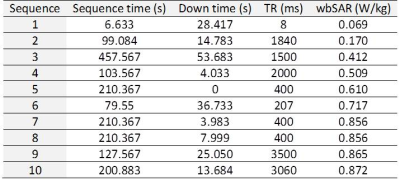 |
46 |
 Analysis on pulse shape and temporal resolution effects on RF heating with medical implants Analysis on pulse shape and temporal resolution effects on RF heating with medical implants
Yuqing Wan, Shiloh Sison
MRI RF heating can potentially lead to thermal damages to biological tissues, especially for patients with medical implants, because the RF E-field may induce currents along the implant, leading to concentrated power deposition at implant-tissue interface. Previous methods for computing temperature change through MR scans indicated minimal effect from temporal resolution between 30s and 120s for patients without implants. However, for patients with medical implants, our study suggests that temperature/thermal dose is predicted more accurately with smaller time step sizes (<10s), because immediate response to the heating (increased blood perfusion) needs to be accounted for in a timely fashion.
|
|
4077.
 |
47 |
 Investigation of breast imaging SAR hotspot with posable human models Investigation of breast imaging SAR hotspot with posable human models
Xin Chen, Michael Steckner
MR users are routinely instructed to eliminate large conducting loops in order to avoid skin/skin contact RF burns. Loops can be formed by skin folds, hands clasped (e.g. above head or on abdomen), hands touching thighs, or touching legs etc. Points of skin/skin contact are often associated with significant local SAR. Modeling with posable human models show that hands clasped skin/skin contact loops associated with prone breast imaging do not necessarily increase local SAR. This suggests that not all skin/skin contact situations are a patient safety concern.
|
 |
4078.
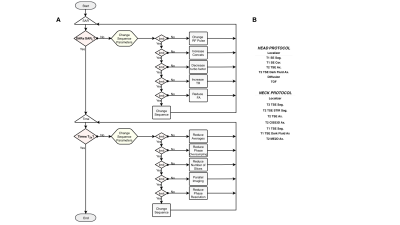 |
48 |
 Design And Evaluation Of Head And Neck Low SAR MRI Protocols For Patients With Implanted Electronic Devices Design And Evaluation Of Head And Neck Low SAR MRI Protocols For Patients With Implanted Electronic Devices
Jessica Martinez, Kévin Moulin, Pablo Villablanca, Daniel Ennis
Patients with MRI conditional implantable electronic devices (IEDs) will be referred for MRI examinations. Imaging these patients, however, remains a challenge, in part, because there is no framework to follow for designing protocols that meet SAR labeling requirements. The purpose of this work was to generate and test a workflow that can be followed for optimizing protocols to meet a SAR labeling target. Following the workflow, we optimized head and neck protocols to meet whole-body SAR ≤0.1W/kg and head SAR≤0.3W/kg. Each low SAR MRI series was within the conditional SAR labeling while maintaining image quality.
|
|
Safety: Bioeffects, Magnetic Fields & Contrast Agents
Electronic Poster
MR Safety
Tuesday, 19 June 2018
| Exhibition Hall |
14:45 - 15:45 |
| |
|
Computer # |
 |
4175.
 |
25 |
 Simulation of Peripheral Nerve Stimulation Thresholds of MRI Gradient Coils Simulation of Peripheral Nerve Stimulation Thresholds of MRI Gradient Coils
Mathias Davids, Bastien Guérin, Valerie Klein, Lothar Schad, Lawrence Wald
Peripheral Nerve Stimulation (PNS) has become the major limitation in many fast MRI sequences for state-of-the-art gradient systems. We recently presented the first (to our knowledge) full peripheral nerve model for assessing magnetostimulation thresholds and validated it for solenoid coils. Our model consists of a comprehensive body model for EM simulations, a detailed atlas of human nerve fibers, and a numerical model describing nerve responses to induced electrical fields. Here, we extend our approach to realistic MRI gradient coils in simulations of male and female body models. The average threshold closely matches experimentally obtained group PNS threshold curves.
|
|
4176.
 |
26 |
 Automatic Generation of Topologically Correct, High Quality, Finite-Element Tetrahedral Body Models from Voxel and Surface Data Automatic Generation of Topologically Correct, High Quality, Finite-Element Tetrahedral Body Models from Voxel and Surface Data
Mathias Davids, Bastien Guérin, Lawrence Wald, Lothar Schad
Assessment of MR safety, e.g., Specific Absorption Rate (SAR) and Peripheral Nerve Stimulation (PNS), relies on the accurate estimation of electromagnetic fields in complex human body models. Finite Element Methods (FEM) can use tetrahedral meshes that can model curved geometries much more accurately than voxel-based meshes. The creation of high-quality surface body models (needed to generate tetrahedral meshes), however, is complex due to the requirements for the surface models (water-tightness, correct topology, no intersections, etc.). We developed an automatic pipeline that, starting with arbitrary surface and voxel data, generates high quality, watertight, topologically correct surface models to be practically useful in FEM simulations.
|
|
4177.
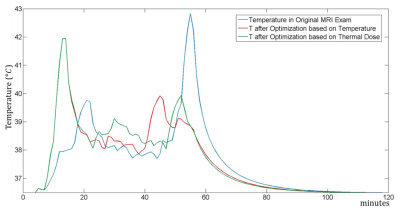 |
27 |
 Optimization of the order and spacing of the sequences in an MRI examination to minimize the thermal dose Optimization of the order and spacing of the sequences in an MRI examination to minimize the thermal dose
Giuseppe Carluccio, Christopher Collins
Thermal dose is a parameter to evaluate the potential to damage tissues by exposure to high temperatures. In case of SAR-induced heating, we show that the maximum thermal dose can be reduced by changing the order of the sequences and delays between sequences without increasing the total exam duration. Using numerical simulations, we have optimized the order of the sequences of a comprehensive spine exam, and the optimized sequence has a maximum thermal dose equal to 0.80 cumulative equivalent minutes at 43 °C (CEM43), while the original exam had a maximum thermal dose equal to 1.72 CEM43.
|
|
4178.
 |
28 |
 Impact of Constant BMI and Variable Lean-Body-Mass on B1+ and SAR Impact of Constant BMI and Variable Lean-Body-Mass on B1+ and SAR
Matthew Tarasek, Yihe Hua, Desmond Yeo, Thomas Foo
Magnetic resonance imaging (MRI) uses radiofrequency energy which is absorbed by the patient. This energy is expressed in terms of specific absorption rate (SAR). Here we analyze the EM and thermal effects of increased lean-body-mass proportions with constant body-mass-index (BMI). We use a combination of techniques to achieve morphed expansion of lean-body-mass (LBM muscle) of non-head skeletal muscle tissue in a computational anatomical human body model. Results indicate that LBM may be a worthwhile anatomical descriptor to consider for impact on thermal risk assessment.
|
|
4179.
 |
29 |
 Effects of Respiration on B1+ and SAR in Whole-Body Imaging at 7 Tesla Effects of Respiration on B1+ and SAR in Whole-Body Imaging at 7 Tesla
Emma Doran, Stephen Bawden, Paul Glover, Susan Francis, Richard Bowtell, Penny Gowland
The work aimed to quantify the effect of the phase of respiration on calculated local SAR and B1+ excitation fields using electromagnetic simulations using XFDTD software and to verify these results by comparing with B1+ maps acquired in vivo. The results show that the variation in local SAR was greater for the anterior elements due to the movement of the chest between inhale and exhale breath holds. The change in B1+ in the abdominal organs and in regions of interest under each transmit element was not significant.
|
|
4180.
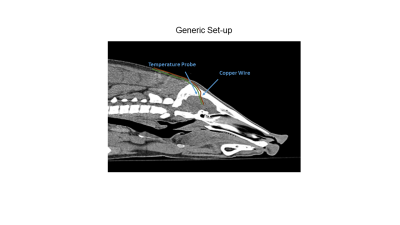 |
30 |
 Investigating the Relationship between CEM43 and Brain Tissue Damage with MRI Investigating the Relationship between CEM43 and Brain Tissue Damage with MRI
Yigitcan Eryaman, Lynn Utecht, Dee Koski, Gregor Adriany, Noam Harel, Kamil Ugurbil, J. Thomas Vaughan
An experimental paradigm that can be used to investigate the relationship between CEM43 metric and tissue damage is presented.
|
|
4181.
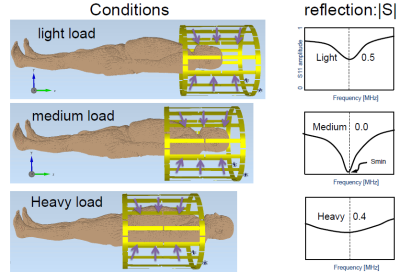 |
31 |
 Simple transmission antenna resonance Q value measurement method using RF power monitors Simple transmission antenna resonance Q value measurement method using RF power monitors
Hideta Habara, Yoshiaki Sato, Masaharu Ono, Kenta Sakuragi, Masahiro Takizawa, Kosuke Ito
In MRI system it is important that whole body SAR is controlled accurately to obtain good scanning images and to keep patients' safety. A simple transmission antenna resonance Q value measurement system has been developed using conventional RF power monitors. The system has been validated comparing with the network analyzer measurements. Based on this validation, whole-body SAR management system was integrated. Using the integrated system, accurate whole-body SAR management has been made possible.
|
|
4182.
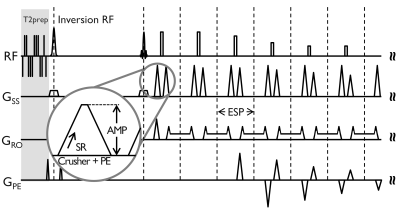 |
32 |
 Reducing PNS with Minimal Performance Penalties via Simple Pulse Sequence Modifications on a Compact 3T Scanner Reducing PNS with Minimal Performance Penalties via Simple Pulse Sequence Modifications on a Compact 3T Scanner
Myung-Ho In, Yunhong Shu, Joshua D Trzasko, Shengzhen Tao, Erin M Gray, John Huston, Matt A Bernstein
More than 170 volunteers (patient subjects and normal controls) have been scanned since April 2016 following installation of a compact 3T MRI system with high-performance gradients (gradient strength=80mT/m, slew-rate=700T/m/s) at our institution. Despite peripheral nerve stimulation (PNS) related concerns associated with the high-performance gradients, no or minimal PNS sensation has been reported, with the exception of three normal control subjects. To mitigate the effect of PNS in these and other especially sensitive subjects, a simple pulse sequence modification was developed. Two of the subjects who reported PNS from their initial exam were available to be re-imaged with the modified pulse sequence, and subsequently reported no PNS.
|
|
4183.
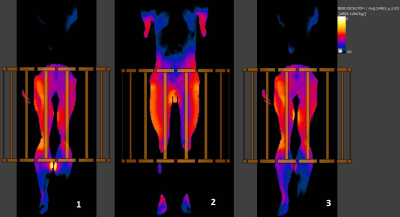 |
33 |
 The impact of pad thickness on RF burn prevention: is a 1mm pad sufficient? The impact of pad thickness on RF burn prevention: is a 1mm pad sufficient?
Michael Steckner, Xin Chen
RF burns are typically categorized according to appearance and suspected mechanism. Skin/skin contact burns are postulated to be caused by significant current flows through a restricted contact area. While not definitively proven, patients are instructed to not clasp hands and pads should be routinely used to minimize skin/skin contact. The effectiveness of a thin pad is investigated with EM modeling. A reported calf burn (peak 10g SAR:whole body SAR ratio ~86) may be avoidable with a 1 mm air gap (SAR hotspot ratio ~2). Understanding that thin pads are sufficient may permit greater flexibility in possible pad solutions.
|
|
4184.
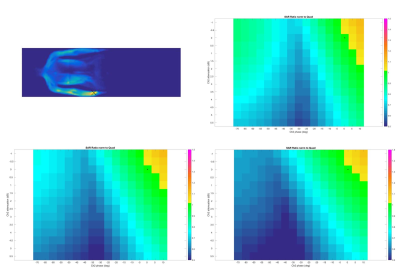 |
34 |
Variation in RF shimming SAR with patient position for 3 T breast imaging
Video Permission Withheld
Mariya Lazebnik
This work investigates the variation in peak spatial SAR for RF shimming for different patient positions in the MR scanner for breast imaging. SAR simulations were performed on the Ella human body model in a 3 T 70 cm-diameter RF birdcage coil. Whole body SAR, peak spatial SAR, and SAR ratio (= peak SAR / whole body SAR) were computed for different patient elevations above the table (i.e., the patient lying on top of a breast coil). Patient position has important implications for setting safe RF shimming ranges due to the variations in peak spatial SAR in different patient positions.
|
|
4185.
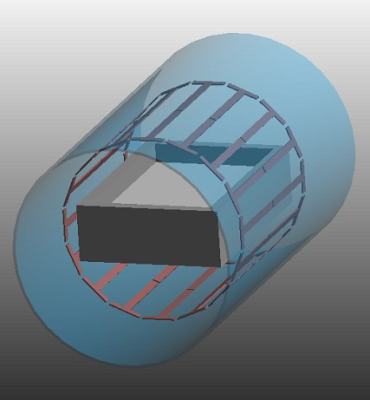 |
35 |
 Comparison of electromagnetic and thermal simulations with measurements of different orthopedic implants system at 1.5T Comparison of electromagnetic and thermal simulations with measurements of different orthopedic implants system at 1.5T
Keran Wang, Zainul Ihsan, Joerg Seehafer, Thomas Doering, Wolfgang Goertz, Gregor Schaefers
With aid of the numerical simulations the test of a typical commercial orthopedic implant system composed of huge amount of multi-component implants varying in dimensions or materials is doable in realistic time and cost regarding the radio frequency induced heating. Electromagnetic and thermal simulations are applied to confirm the worst case configuration, locate the hotpot and interpret the temperature rise which is compared with the experiment test. To catch the worst case scenario the placement of the test object should be considered in relation to the local electrical field and the setup of simulation should approach the experimental condition.
|
|
4186.
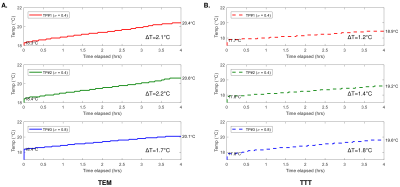 |
36 |
 B1+ and Temperature Analysis in Two UHF RF Coils B1+ and Temperature Analysis in Two UHF RF Coils
Sossena Wood, Tales Santini, Nadim Farhat, Tiago Martins, Narayanan Krishnamurthy, Tamer Ibrahim
Our work makes a comparison of the RF performance of a TEM resonator and a TTT coil on a 2-compartment agar phantom. While the results show lower B1+/RF power efficiency for the TTT coil when compared to the TEM coil, the temperature rise in the TEM coil is higher (resulting in lower B1+/SAR efficiency) for a fixed average B1+ intensity across the volume of the coil load.
|
|
4187.
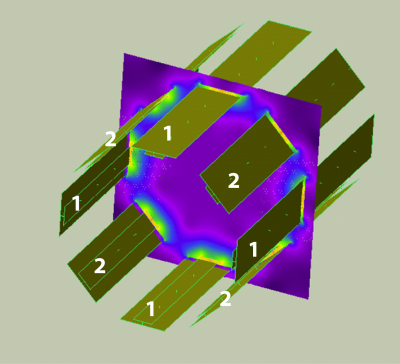 |
37 |
 Reduced SAR excitation with linear phase coils Reduced SAR excitation with linear phase coils
Glen Morrell, Rock Hadley
A novel method for SAR reduction for slice- or slab-selective excitation is proposed which uses an array of two linear phase RF coils and two channel transmission to reduce SAR with no change in pulse length, bandwidth, or slice profile compared to conventional excitation. FDTD simulation results show a reduction of SAR by a factor of two.
|
|
4188.
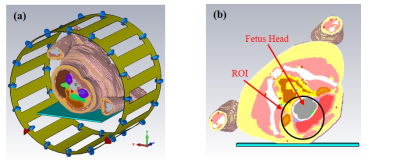 |
38 |
 Assessment of high dielectric material in different sizes for fetal MRI at 3T Assessment of high dielectric material in different sizes for fetal MRI at 3T
Chao Luo, Nan Li, Guoxi Xie, Xiaoliang Zhang, Xin Liu, Ye Li
In this paper, we investigate the effect of the size and thickness of high permittivity dielectric pads to the imaging performance in fetal imaging at 3T through numerical modeling and simulations. The results of this study can be used as a guide in selection of appropriate size and thickness of dielectric pads in fetal magnetic resonance imaging for gaining the highest imaging performance.
|
|
4189.
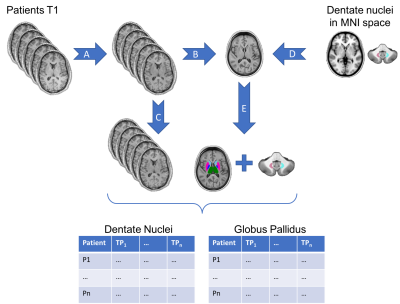 |
39 |
 Evaluation of Macrocyclic Gadolinium-Based Contrast Agent Retention in a Longitudinal Multiple Sclerosis Study Evaluation of Macrocyclic Gadolinium-Based Contrast Agent Retention in a Longitudinal Multiple Sclerosis Study
Gabriel Kocevar, Salem Hannoun, Claudio Stamile, François Cotton, Françoise Durand-Dubief, Dominique Sappey-Marinier
Gadolinium-based contrast agents (GBCA) are commonly used to identify blood-brain-barrier disruption. Recent studies reported gadolinium deposition in deep gray matter (GM) structures, following serial injections of linear complexes of GBCA. While it is recognized that linear complexes of GBCA may lead to gadolinium retention in brain, macrocyclic GBCA should also be evaluated. In this study, we investigated the effect of serial macrocyclic GBCA injections in 92 Multiple Sclerosis patients followed during seven years. Our results did not show any significant signal intensity changes in deep GM structures, and particularly in the dentate nuclei and the globus pallidus.
|
|
4190.
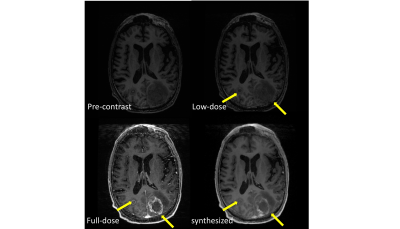 |
40 |
 Deep Learning Enables 90% Reduction in Gadolinium Dosage for Contrast Enhanced MRI Deep Learning Enables 90% Reduction in Gadolinium Dosage for Contrast Enhanced MRI
Enhao Gong, John Pauly, Max Wintermark, Greg Zaharchuk
There are increasing concerns over gadolinium-based-contrast-agents-administration(GBCA). A deep-learning (DL) method was developed to reduce the gadolinium dose in Contrast-Enhanced-MRI (CE-MRI). The proposed method includes an acquisition step(pre-contrast, 10% low-dose and full-dose CE-MRI with T1-weighted-IR-FSPGR), a pre-processing step and a deep learning model trained to predict full-dose CE-MRI from pre-contrast and low-dose images. Evaluated on a clinical neuro CE-MRI dataset (10 patients for training and another 20 patients for evaluation), both quantitative metrics and radiologists’ ratings showed the proposed method achieved improved synthesis, with better motion-artifact-suppression and NO significant differences in contrast-enhancement quality, compared with ground-truth full-dose CE-MRI. Thus, using the proposed Deep Learning method, GBCA can be reduced, by at-least-10-fold, while preserving image quality and diagnostic information.
|
|
4191.
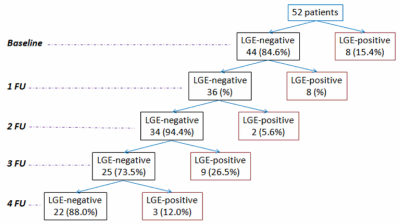 |
41 |
New occurrences of macroscopic myocardial fibrosis in thalassemia at long term by multiple follow-up
Video Permission Withheld
Antonella Meloni, Vincenzo Positano, Laura Pistoia, Pietro Giuliano, Stefania Renne, Riccardo Righi, Priscilla Fina, Petra Keilberg, Crocetta Argento, Cristina Paci, Antonella Massa, Alessia Pepe
We investigated the evolution of myocardial fibrosis in terms of new occurrences over a period of 6 years in thalassemia patients who underwent to multiple LGE CMR scans and we detected an high number of new occurrences of myocardial fibrosis. Our data suggest the importance of repeating the LGE CMR over time using 'low risk' macrocyclic agents.
|
|
4192.
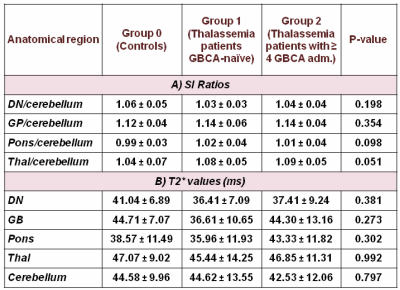 |
42 |
 Absence of T1 hyperintensity in the brain of high-risk iron loaded thalassemia patients after multiple administrations of high dose Gadobutrol Absence of T1 hyperintensity in the brain of high-risk iron loaded thalassemia patients after multiple administrations of high dose Gadobutrol
Antonella Meloni, Domenico Montanaro, Vincenzo Positano, Daniele De Marchi, Mariachiara Resta, Petra Keilberg, Laura Pistoia, Anna Spasiano, Tommaso Casini, Caterina Cinzia De Bari, Sara De Cori, Alessia Pepe
Our study describes the lack of increased signal intensity (SI) in T1-weighted MRI images after repeated administrations of Gadobutrol in a high-risk population (high dose/scan, iron overload that facilitates the transmetallation of gadolinium). A potential role of the chelation therapy cannot be excluded. Moreover, it is highlighted that SI ratios in the sampled areas differ between 1.5T and 3T.
|
|
4193.
|
43 |
Safety for the Off-label Use of Ferumoxytol in Magnetic Resonance Imaging: Early Results from the FeraSafe Multi-Center Registry™
Video Permission Withheld
Kim-Lien Nguyen, Rola Saouaf, Cynthia Rigsby, Lindsay Griffin, Mark Fogel, Kevin Whitehead, Mark Schiebler, David Newby, J. Paul Finn
Ferumoxytol is approved in the United States (U.S.) for treatment of iron deficiency anemia in chronic kidney disease. However, its superparamagnetic properties can be leveraged for off-label use in MRI. In 2015, the U.S. Food and Drug Administration (FDA) issued a “black-box” warning regarding risk of rare but serious hypersensitivity reactions based on post-marketing surveillance therapeutic use data. Preliminary experience from the FeraSafe Multi-Center RegistryTM suggests a low incidence of adverse events with the off-label diagnostic use of ferumoxytol. To date, these preliminary results suggest that with appropriate clinical use and monitoring, there is an acceptable benefit /risk profile.
|
|
4194.
 |
44 |
 Mapping Gadolinium Entry and Clearance from the Brain using Dynamic MRI Mapping Gadolinium Entry and Clearance from the Brain using Dynamic MRI
Payam Nahavandi, Ian Harrison, May Thin, John Connell, Ozama Ismail, Yolanda Ohene, Jack Wells, Mark Lythgoe
Recently, evidence for gadolinium retention in the brain was provided, raising concerns regarding the safety of these agents. This accumulation raised important questions, most crucially, by which pathway does gadolinium enter the brain. We provide insight into this by dynamic monitoring of the infiltration and clearance of gadolinium into the brain parenchyma following an IV injection. Following gadolinium injection, inflow of contrast into the cerebrospinal fluid spaces was prominent. 25mins post injection, contrast enhancement is detected in the periventricular regions and hypothalamus. This finding provides insight into the entry routes by which gadolinium infiltrates the brain following a systemic administration.
|
|
4195.
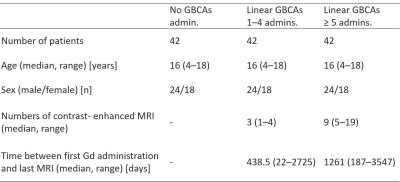 |
45 |
 Linear contrast agent-induced high signal intensity in the dentate nucleus and globus pallidus on unenhanced T1-weighted images in pediatric patients Linear contrast agent-induced high signal intensity in the dentate nucleus and globus pallidus on unenhanced T1-weighted images in pediatric patients
Shintaro Ichikawa, Utaroh Motosugi, Yoshie Omiya, Hiroshi Onishi
Hyperintensity in the dentate nucleus (DN) and globus pallidus (GP) on unenhanced T1-weighted images (T1WI) was associated with previous administration of linear gadolinium-based contrast agent (GBCA) in pediatric patients. The DN-to-pons ratio increased as the number of linear GBCAs administrations increased. The GP-to-thalamus ratio of the “Linear GBCAs ≥ 5 administrations” group was significantly higher than that of the “No GBCAs administration” and the “Linear GBCAs 1–4 administrations” groups. The number of previous administrations of linear GBCAs was positively correlated with the DN-to-pons ratio and the GP-to-thalamus ratio.
|
|
4196.
 |
46 |
 STUDY OF SKIN ENHANCEMENT BY AGE IN WOMEN STUDY OF SKIN ENHANCEMENT BY AGE IN WOMEN
Akira Yamamoto, Tsutomu Okada, Yasutaka Fushimi, Tomohisa Okada, Kaori Togashi
In women, the head skin signal enhancing effect tends to decrease with age.
|
|
4197.
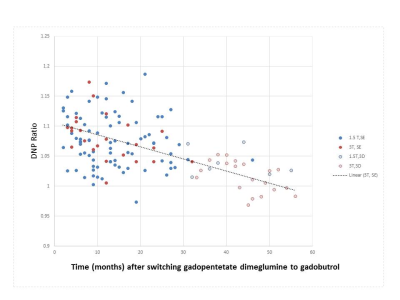 |
47 |
 Dentate Nucleus Signal Intensity Decrease on T1-Weighted MR Images after Switching from Linear to Macrocyclic GBCA Dentate Nucleus Signal Intensity Decrease on T1-Weighted MR Images after Switching from Linear to Macrocyclic GBCA
Ashkan Heshmatzadeh Behzadi, Yize Zhao, Zerwa Farooq, George Shih, Martin Prince
Dentate Nucleus signal intensity ratios decreased with time after switching from linear (gadopentetate) to macrocyclic (gadobutrol) agent.
|
|
4198.
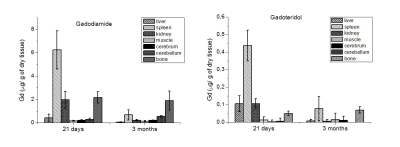 |
48 |
 Gd accumulation in tissues of healthy mice upon repeated administrations of Gd-based contrast agents Gd accumulation in tissues of healthy mice upon repeated administrations of Gd-based contrast agents
Eliana Gianolio, Enza Di Gregorio, Giuseppe Ferrauto, Silvio Aime
GBCAs are routinely used in many clinical MRI protocols, their high stability should ensure that the Gd-complexes are excreted intact without side effects. Recently, it was reported that tiny amounts of Gd3+ may be retained in the brain of patients. The aim of this study was to investigate, in an animal model, the in vivo fate of Gadoteridol and Gadodiamide extending the investigation of Gd retention to other body tissues besides brain. Several administration protocols differing for i) the number of total doses, ii) the frequency of the administrations and iii) the sacrifice time after the last administration, were compared.
|
|
| Back |
| The International Society for Magnetic Resonance in Medicine is accredited by the Accreditation Council for Continuing Medical Education to provide continuing medical education for physicians. |

















































